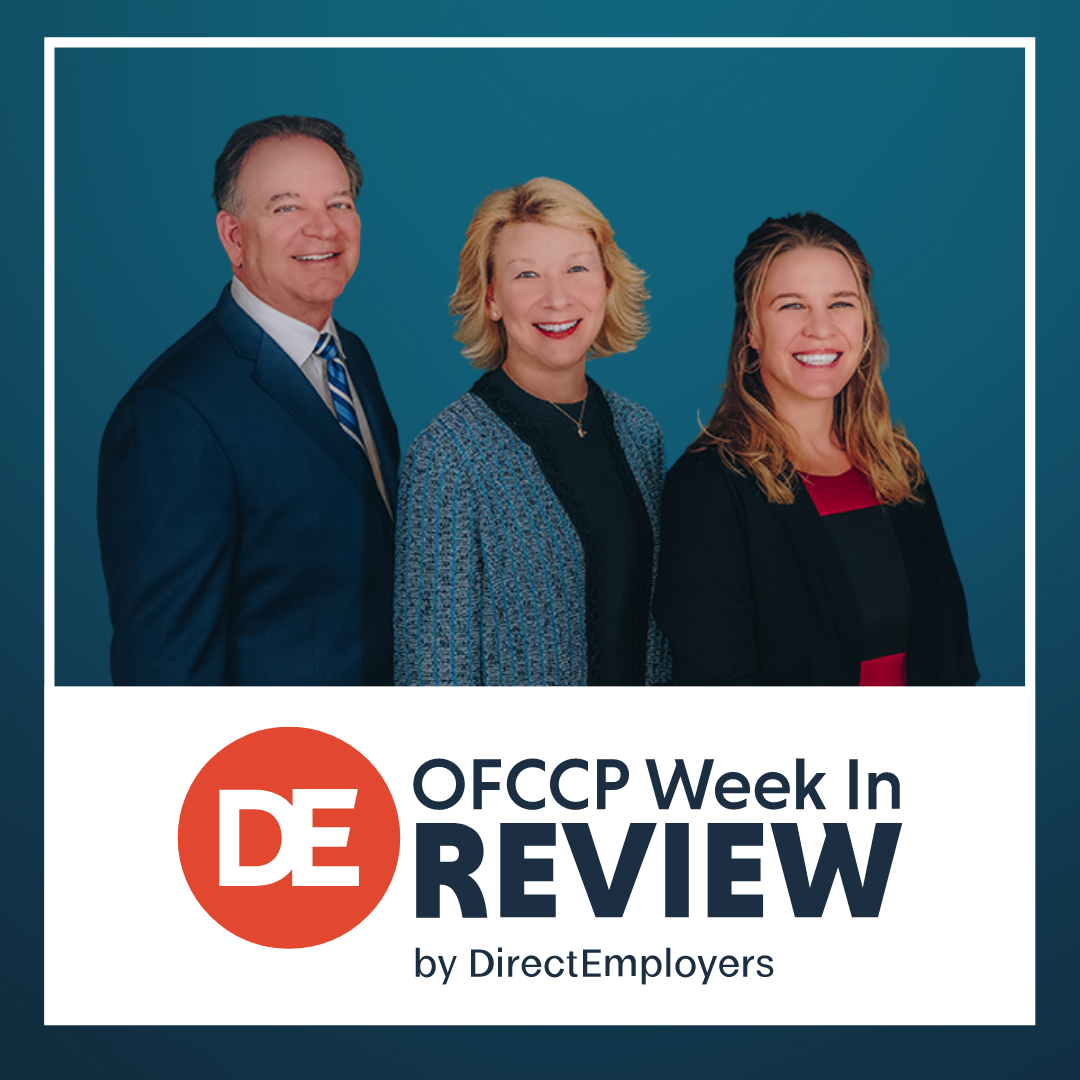
- OFCCP FY 2023 Budget Request Seeks A Lot Of Money And Lays Out A Very Comprehensive And Ambitious Internal Rebuilding Program
- EEOC Seeks Big FY 2023 Budget Increase Despite Declining Workload Numbers Also Released Today in New Performance Report
- Cast Your Vote And Do Your Outreach – American Job Centers Add Voting
- EEOC Presented New Features and Improvements to the EEO-1 Survey Filing System
- USDOL Public Service Announcement: “Mental Health at Work: What Can I Do?”
- Comment Now on Revisions to the I-9 Form
- Comment on “Notice of Employee Rights under National Labor Relations Act Complaint Process” (this is the so-called “anti-Beck notice”)
- OFCCP Contractor Portal Opened – New Resources Available
- Transgender Day of Visibility Sees Swooping Efforts Across the Federal Government to Recognize and Support the Transgender Community
- EEOC to Add Non-Binary Gender Option to Discrimination Charge Intake Process
- OFCCP Released The “Wrecking Ball” On Most Of The Remaining Trump Administration Policies and Procedures Of Significance
- E-Verify Records Disposal Date Extended to May 6, 2022
- March’s “New Jobs Filled Employment Numbers” Increased, But Those Dropping Out of The Workforce Provided An Anemic “Jobs Gains” Month
- Only 10% Of Those Working In U.S. Teleworked In March Because Of The COVID-19 Pandemic
- BLS Reports Show Educational Attainment Level Correlated to Higher Unemployment
Monday, March 28, 2022: OFCCP FY 2023 Budget Request Seeks A Lot Of Money And Lays Out A Very Comprehensive And Ambitious Internal Rebuilding Program
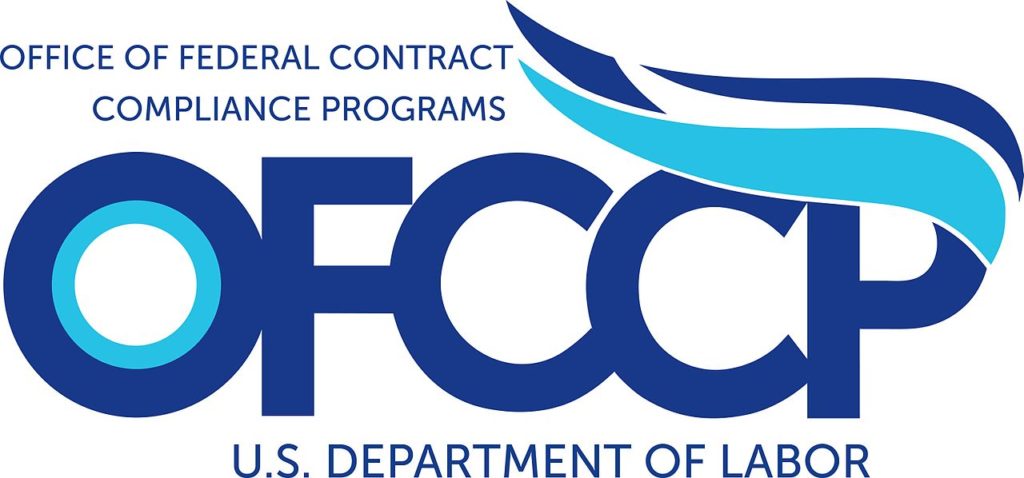
While Democrats can currently drive a budget through and pass the House, the prospect of Republicans taking the House of Representatives back a short 9 months from now will drive Senate Republicans to procrastinate on the FY 2023 budget until after the next Congress is seated on January 3, 2023.
However, on the bright side for OFCCP, Senate Democrats are again openly discussing subjecting the entire Budget to a very controversial “Reconciliation Vote” requiring only a 50% +1 majority vote and not a 60-vote plurality. (Of course, this drastic “nuclear option” parliamentary maneuver would require not only convincing Senators Joe Manchin (D-WVA) and Kyrsten Sinema (D-AZ) to get on the bandwagon and would have severe repercussions within the Senate for decades to come. So, Democrats will not lightly go this route, despite strong pressure from liberal Democrats that Senate Majority Chuck Schumer just “go for it”). So, there is one possible path forward for OFCCP’s big budget proposal. The odds are better to bet on college basketball, though.
Budget Justification Highlights For Programs And Initiatives OFCCP Is Proposing For FY 2023 (beginning October 1, 2022)
Monday, March 28, 2022: EEOC Seeks Big FY 2023 Budget Increase Despite Declining Workload Numbers Also Released Today in New Performance Report

Along with the Commission’s “Fiscal Year 2023 Congressional Budget Justification” (i.e., “Budget request”), the Commission published its “Annual Performance Report” (“APR”), including for the first time a report of its FY 2021 Charge filings.
These Charge filings were of special interest because they report the first full year of post-George Floyd Charge numbers since a Minneapolis policeman killed Mr. Floyd on May 25, 2020. The APR confirmed the continuing steady decline in Charge filings with the EEOC which have stair-stepped down nicely in number since the waning years of the Obama Administration, continuing through the Trump Administration and now through the first year of the Biden Administration. The newly reported FY 2021 Charge filing number is only 61,331 (down 6,117, or ~9%) from FY 2020’s 67,448 Charge filing number and down a whopping 33% since FY 2016, six years earlier. As taken from the EEOC’s website, the Commission’s Charge intake numbers look like this in each of the last six years:
- FY 2016 – 91,503
- FY 2017 – 84,254
- FY 2018 – 76,418
- FY 2019 – 72,675
- FY 2020 – 67,448
- FY 2021 – 61,331
But no sooner than I had discovered those dramatically decreasing Charge filing numbers, representing Charge filings across all six statutes the EEOC is responsible to enforce, I then stumbled across the below passage from EEOC Chair Burrow’s “Chair’s Report” under the heading of “Strengthening the Agency.” Chair Burrow’s Report was bundled with and preceded the EEOC’s website version of the Commission’s “Fiscal Year 2023 Congressional Budget Justification.” I almost broke my neck as I stopped my speed reading of her Message to return and re-read with greater care the following sentences wondering if there had been a misprint:
“By fiscal year 2020, the EEOC’s full-time staffing had dropped to its lowest level in four decades, from over 3,390 employees in 1980 to fewer than 2,000 employees in Fiscal Year 2020. During that same period, even as the agency’s resources declined, its workload expanded due to the increase in the U.S. population and passage of important new legislation that created new civil rights protections, such as the Americans with Disabilities Act of 1990, the ADA Amendments Act of 2008, and the Genetic Information Nondiscrimination Act of 2008.” (emphasis supplied)
Wow! That sentence I have underlined led me astray and is terribly misleading. Actually, U.S. population growth, three statutes which have been in place for 32 years and 12 years, respectively, or even the reported increase in Sunspots have nothing to do with projected agency workload increases for 2023. While the Commission has several major tasks to annually perform, its primary mission and its largest workload demand is to process and resolve in-bound Charges alleging unlawful discrimination in employment. And, as to Charge filings, that workload WENT DOWN. Big time. Again. For the sixth year in a row. My gosh, the EEOC’s Charge filing inventory is plummeting for the sixth year in a row, touching three different Administrations and three different EEOC Chairs.
When I was helping to run a federal agency, I was always taught (and instructed) to build my annual agency budget to my marketplace and not just make it bigger because we wanted to do so or could do so. I was also taught and instructed to reduce the budget from the prior year, if possible, by having my staff work smarter and more efficiently for the taxpayers and by investing in training and data systems to reduce future (expensive) employee headcount, if possible, provide better customer service and increase excellence among the staff.
The EEOC Budget Justification reports four other numbers of interest to the employee headcount issue.
First, the EEOC grew its headcount last year (in 2021) by 207 employees even while its Charge workload reduced by about 9% to almost historically low volumes.
Second, the almost half-billion-dollar FY 2023 budget the Commission seeks ($464,650,000) hopes for a further employee headcount increase of 75 employees at a cost of over $40 million.
Third, payroll costs for the Commission annually consume about 75% of the EEOC’s budget (~77% proposed for FY 2023 since a little over $31 million of the proposed FY 2023 budget would flow through to the states and tribal employment rights organizations).
Fourth, apart from the annual large stairstep reductions occurring in EEOC Charge filing intakes, over 3,000 of the EEOC’s Charge intake for FY 2021 (last year) were one-time COVID-19 (largely) ADA claims not likely to repeat in FY 2023 (next year and even as COVID-19 infections hit new record lows going back to the first month the virus broke out over two years ago). If the COVID-19 Charges do continue, they will likely not occur in nearly the same volume.
On these facts, prudent managers would reduce their budget proposal by at least the $40M added payroll costs proposed to support 75 new employees and would not replace attrition from here on out to save the taxpayers unneeded budget. Most managers would allow attrition to run and not be replaced until the Commission had slimmed down and reached a new lower staffing level commensurate with the market demand for its services. (The Commissioners can always quibble with each other whether that is 1700 employees or 1600 employees or some other number. But when your primary workload is down by one-third over the last six years, and still going down, and technology is increasing efficiency which prior budget requests have promised, the Commission needs an aggressive weight loss program). By the way, I have never been keen on Reduction in Forces, although that would occur to most private sector managers on the facts of the Commission’s budget and workload. Rather, I would simply let attrition “right size” the Commission to its needed new employee headcount suitable for its declining market.
At the same time, I had been planning all week to write a Blog on the EEOC’s Annual Performance Report. I had it all mapped out in my head, in fact, as I prepared to use Saturday to write. But then on Friday, a Blog from an author I have never read before crossed my desk and I accidentally clicked it open. I was stunned. It was the Blog I had mapped out in my head and intended to write up. So, fearful that if I wrote my Blog now having once seen this other Blog, I thought the author and others would think I had copy-catted him (which is why I have a habit not to read other Blogs before writing my own). Also, his was written better than I would have written mine and his contained numerous column charts I would never have been able to compose. (I suffered a terrible case of “Chart envy”). So, I decided to stand down, knowing I had been beaten and bested.
The Blog is titled “2021 EEOC Charges Show Decline in Most Categories” which an accomplished young lawyer from Buffalo by the name of Scott Horton wrote. Read it. It’s good. And the decline of Charge filings Mr. Horton documents from the EEOC’s Annual Performance Report will serve as further food for thought about whether the EEOC budget should go up at all, and how far down it probably should go.
New Idea for Washington D.C.: Maybe the EEOC needs to shrink to the size of its new marketplace in the best interest of the taxpayers. The Commission seems to be doing just fine by its employees and the Charge filers it serves. See the record backpay recoveries in recent years beginning at the end of the Obama Administration (Jenny Yang, Chair) and continuing in each year of the Trump Administration (Janet Dhillon, Chair) even amid falling Charge inventories. Sometimes less is all you need.
Monday, March 28, 2022: Cast Your Vote And Do Your Outreach – American Job Centers Add Voting
The U.S. Department of Labor has issued guidance to all 50 states and the nation’s territories, encouraging them to designate more than 2,300 locally operated American Job Centers, also known as CareerOneStop centers, as voter registration agencies under the National Voter Registration Act.
The guidance aligns with President Biden’s Executive Order 14019, Promoting Access to Voting. The direction also affirms that American Job Centers, their websites, and their partners’ websites can provide basic voting information – including information from nonpartisan sources like Vote.gov or state election agencies – whether or not they are voter registration agencies.
American Job Centers
American Job Centers (AJCs) provide resources for various demographics – including young adults, workers who have lost their jobs, service members returning to the workforce, veterans, workers with disabilities, workers fifty-five and older, and workers with a criminal record – making them ideal venues to provide voter registration services to those workers.
AJCs are also where covered federal Government contractors must list their available jobs for compliance in accordance with their Affirmative Action Program for Protected Veterans (per VEVRAA and OFCCP’s implementing Rule at 41 CFR Section 60-300.5(a) 2.). Connecting with the Veteran Employment Specialists at the AJCs is an excellent form of outreach to help employers match qualified veterans with their job openings. So cast your vote and chat with your Vet Rep!
Tuesday, March 29, 2022: EEOC Presented New Features and Improvements to the EEO-1 Survey Filing System
 NILG Webinar
NILG Webinar
The National Industry Liaison Group (NILG) hosted Kimberly Essary, Deputy Chief Data Officer, and Paul Guerino, Director of the Data Development and Information Products Division, from the EEOC’s Office of Enterprise Data and Analytics (OEDA) for a brief overview of new features and updates to the EEO-1 Component 1 Online Filing System.
New Feature
The Agency reported it received over 115,000 inquiries during the last data collection period. Although many questions were COVID-related or due to the new system, the enormous number warranted a more streamlined and efficient system. Starting April 12th (when the Filing System opens), a new feature titled the Message Center will provide self-service options and filters to update, track, and terminate support requests. A drop-down feature in the issue type will populate relative information to ideally answer frequent questions on the spot. Support requests will auto close in seven days if the user does not respond; however, users may re-open requests, and reminders will be plentiful due to the automation of the system.
Improvements
EEOC has made it easier for filers to report acquisitions, spinoffs, and mergers (ASMs) with a new self-service ASM Module. The Module will guide users relative to the events at the organization.
Improvements to the data file upload capabilities will reduce the number of errors and provide clear instructions to fix the errors. Proactive “warnings” will allow users to resolve issues that would have previously resulted in errors.
Reminders
The presenters also referenced the recent announcements we covered in the stories below.
- New Resources Available for EEO-1 Filers
- Updated Procedures Announced for Third-Party EEO-1 Survey Filers
- EEO-1 Administrators Take Note: EEOC Will Replace Its EEO-1 Type 6 Report For Small Establishments With Its Type 8 Report
- 2021 EEO-1 Component 1 Data Reporting Portal to Open April 12, 2022, with a May 17, 2022, Last-Day-To-File Date. ALSO: 2019/2020 EEO-1 Filing Portal Closed
Tuesday, March 29, 2022: USDOL Public Service Announcement: “Mental Health at Work: What Can I Do?”
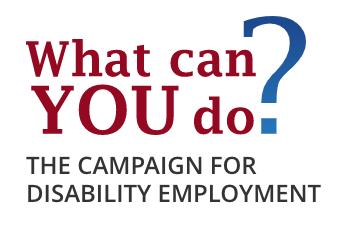
At the heart of the “Mental Health at Work: What Can I Do?” campaign is a public service announcement that highlights how everyone in the workplace can promote workplace well-being.
“Today, one in five working-age Americans has a mental health condition. As America recovers from the COVID-19 pandemic, mental health-friendly workplaces will be more important than ever,” said U.S. Secretary of Labor Marty Walsh. “This timely public education campaign reminds us that we all have a role to play, and that we all benefit from flexible, supportive workplaces that promote good mental health.”
The Campaign for Disability Employment (CDE), a collaborative effort funded by the Office of Disability Employment Policy, produced the public service announcement (PSA) that showcases supportive, inclusive workplaces for all employees. The Agency will distribute the PSA to television and radio stations nationally, and employers may download campaign materials online.
“Mental Health at Work: What Can I Do?” is the fifth in a series of CDE-produced PSAs exploring different aspects of disability employment.
See Also
Secretary of Labor Marty Walsh’s blog, “Mental Health at Work: We All Have a Role To Play”
Wednesday, March 30, 2022: Comment on “Notice of Employee Rights under National Labor Relations Act Complaint Process” (this is the so-called “anti-Beck notice”)
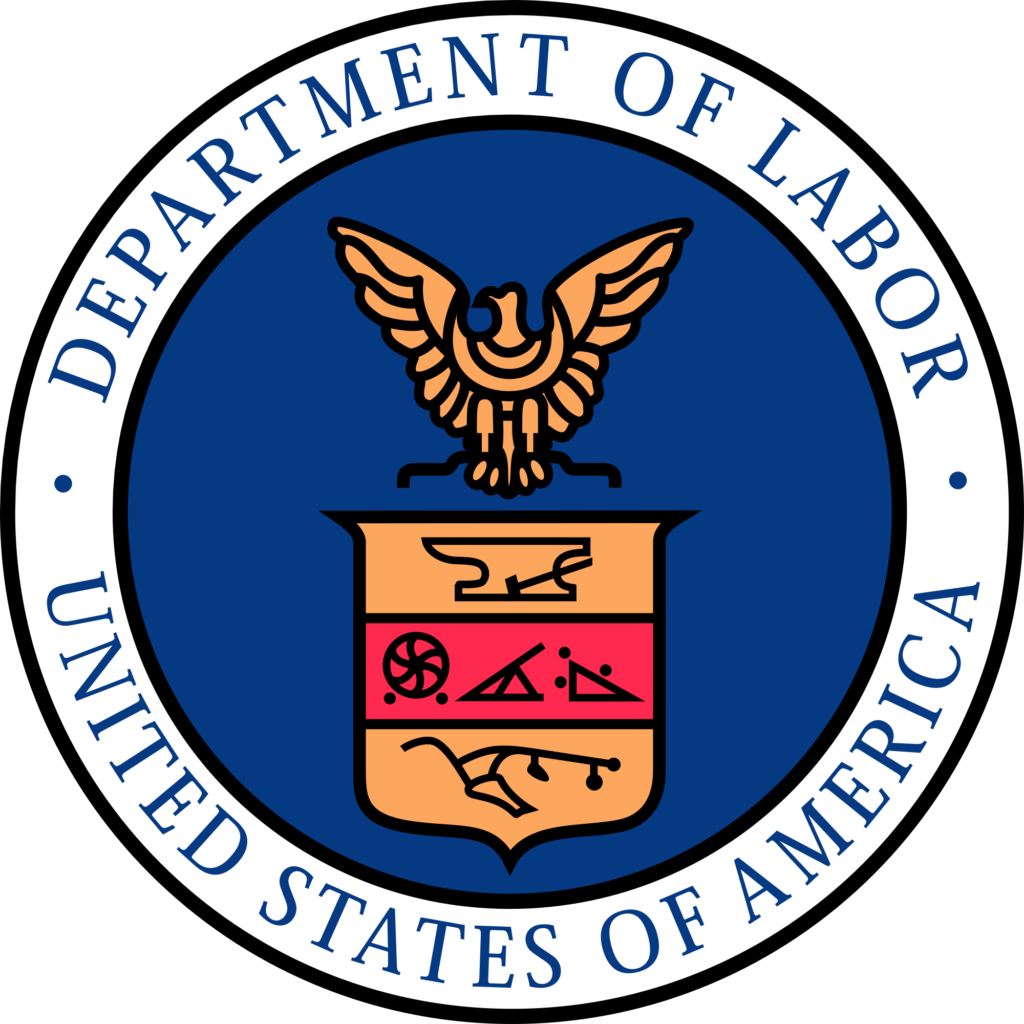
Ten days after his inauguration, President Obama (on January 30, 2009) started the current parade by signing Executive Order 13496, “Notice of Employee Rights Under Federal Labor Laws.” Apart from rescinding a Bush Executive Order (discussed below) requiring federal contractors to post Notices alerting employees that, among other things, they did not have to unionize, the Obama Order went 180 degrees in the other direction. The Obama Order required covered Government contractors and subcontractors to post notices informing their employees of their rights as employees under Federal labor laws, including their right to unionize pursuant to the National Labor Relations Act. The Obama Order also provided the text of required contractual provisions that Federal Government contracting departments and agencies include in every Government contract, except for collective bargaining agreements and contracts for purchases under the Simplified Acquisition Threshold.
President Obama’s Executive Order followed one his predecessor, President George W. Bush (the son) had published following a (then) recent SCOTUS decision in the Beck v. Communication Workers case. That case had interpreted the National Labor Relations Act to prohibit unions from requiring unionized employees to involuntarily pay those portions of their union dues their union used for political contributions if it did. As a follow on to the Beck decision, President Bush’s Executive Order required federal contractors to post what became known as the “Beck Notice” advising employees of their rights not to unionize and alerting them of their right not to pay those portions of their union dues the union used for political contributions.
Following issuance of President Obama’s Executive Order 13496, the Secretary of Labor then assigned USDOL’s Office of Labor-Management Standards (OLMS) to implement the Order. OLMS then published Rules at 29 CFR part 471.11(c) which set forth the Department’s procedures when accepting written complaints alleging that a contractor doing business with the Federal government had failed to post the notice the Obama Executive Order required. Federal contractors then entered the “Twilight Zone” as many of them exercised their discretion to post the “Beck” Notice side-by-side along with the required Obama anti-Beck Notice. And then, surprising, the Trump USDOL did NOT rescind the Obama EO. So, the anti-Beck Notice obligation has continued.
The Paperwork Reduction Act’s every three-year required update of paperwork impacting the regulated community now requires review of the existing approval of the anti-Beck Notice.
Note: The Office of Federal Contract Compliance Programs (OFCCP) manages the compliance evaluation and investigatory requirements of the anti-Beck Notice. However, OFCCP has reported almost no Complaint activity arising under the Order.
USDOL now seeks feedback on:
- Whether the collection of information is necessary for the proper performance of the functions of the Department, including whether the information will have practical utility;
- if the information will be processed and used in a timely manner;
- the accuracy of the agency’s estimates of the burden and cost of the collection of information, including the validity of the methodology and assumptions used;
- ways to enhance the quality, utility, and clarity of the information collection; and
- ways to minimize the burden of collecting information on those who are to respond, including the use of automated collection techniques or other forms of information technology.
Send comments to olms-public@dol.gov before May 31, 2022.
Why The Notice & Request For Comments?
In compliance with the Paperwork Reduction Act of 1995 (PRA), DOL seeks PRA authorization for this information collection from the public for three (3) years. OMB authorization for an ICR cannot be for more than three (3) years without renewal. The DOL notes that information collection requirements submitted to the OMB for existing ICRs receive a month-to-month extension while they undergo review.
See Also
- OFCCPs Fact Sheet: Obligation of Federal Contractors to Notify Employees of Their Rights Under Federal Labor Laws
Thursday, March 31, 2022: OFCCP Contractor Portal Opened – New Resources Available

The Agency hosted a live webinar covering an overview of the Portal, a demonstration of how a company can certify compliance through the Portal, and answers to frequently asked questions.
The Agency will host another live encore webinar on April 7, 2022.
New Resources
How-To Videos. In addition to “How to Register with a Known Identifier,” “How to Register when your Identifier is Unknown,” and “How to Update Your Establishments or Functional/Business Units,” new releases include:
- How to Certify Establishments or Functional Business Units (3-minutes)
- How to Manage Multiple Users (5-minutes)
User Guide. The Guide now contains Section 5 – Certification and eight new “figures” (screenshots).
One-Page Certification Guide. The PDF provides four screenshots outlining the certification steps. This is in addition to the existing one-page PDF guide for the registration process.
Frequently Asked Questions. FAQs now include “Certification” and “Updating Records” questions. Another new FAQ consists of a recent common question: “What if the Contractor Portal does not accept the 2018 EEO-1 report identifier?” (the trick – enter only the first six digits).
How We Got Here
Still uncertain about the Contractor Portal and what contractors are “required” to do? See our story “OFCCP’s AAP Verification Interface Gets Set to Open – Contractors Must Now Decide Whether to Voluntarily Comply with OFCCP’s Unenforceable “Requirement” Since the Agency Has Now “Thrown Down Its Gauntlet.”
Thursday, March 31, 2022: Transgender Day of Visibility Sees Swooping Efforts Across the Federal Government to Recognize and Support the Transgender Community
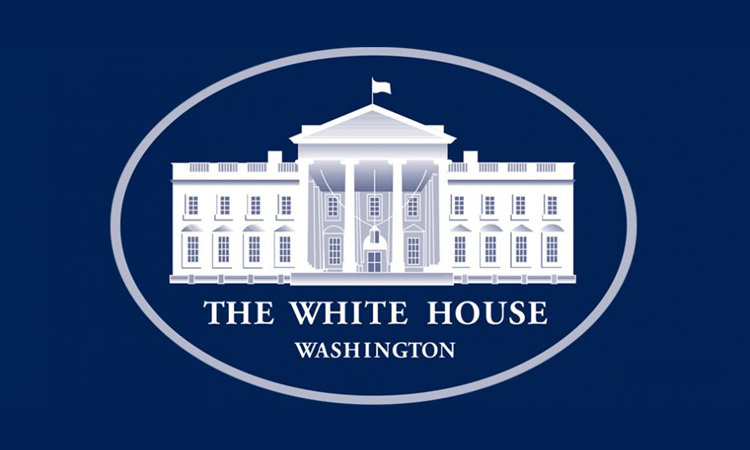
New Actions
The Fact Sheet announces new actions to support the mental health of transgender children, remove barriers that transgender people face accessing critical government services, and improve the visibility of transgender people in federal data.
- Reinforcing federal protections for transgender kids.
- Advancing dignity, respect, and self-determination for transgender people by improving the traveler experience.
- Including gender “X” selection option on passports
- Replacing gender-based screening systems
- Removing gender identification from TSA screening process
- Updating TSA pre-check programs to include gender “X”
- Providing resources for transgender kids and their families, including Gender-Affirming Care.
- Improving access to federal services and benefits for transgender Americans.
- Assessing retirement savings
- Filing an EEOC Complaint (see story below)
- Filing for federal student aid
- Advancing inclusion and visibility in federal data.
“In too many critical federal surveys and data systems, transgender, non-binary, and gender non-conforming people are not fully reflected. To improve visibility for transgender Americans, agencies are announcing new actions to expand the collection and use of sexual orientation and gender identity (SOGI) data.”- Funding for research on how best to add sexual orientation and gender identity to Census surveys
- Data from the first-ever research testing on how transgender Americans want to see themselves reflected on Federal IDs
- A new report from the National Academy of Science on Measuring Sex, Gender Identity, and Sexual Orientation
Existing Efforts
The Fact Sheet also outlines the advances the Biden Administration has taken thus far to advance equality for transgender Americans. Headlines include:
- Combatting legislative attacks on transgender kids at the state level.
- Advancing civil rights protections for transgender Americans, including pushing for the Equality Act and signing an Executive Order combating discrimination.
- Supporting transgender service members and veterans, including reversing the ban on transgender service members.
- Responding to the crisis of anti-transgender violence and advancing safety.
- Advancing health equity and expanding access to gender-affirming health care to support transgender patients.
- Supporting transgender students and their families.
- Promoting fair housing and ending homelessness for transgender Americans.
- Advancing economic opportunity and protections for transgender workers.
- Advancing gender equity and transgender equality at home and around the world.
- Supporting transgender leaders and public servants.
- Advancing visibility for transgender Americans, including a White-House Toolkit on Transgender Equality.
Thursday, March 31, 2022: EEOC to Add Non-Binary Gender Option to Discrimination Charge Intake Process
In coordination with Transgender Visibility Day, first Proclaimed by President Biden in 2021, the U.S. Equal Employment Opportunity Commission (EEOC) announced that it will update the voluntary demographic questions relating to gender in the online public Portal. People may use the Portal to file a charge alleging unlawful employment discrimination subject to the Commission’s jurisdiction. The Agency will also revise the Online Spanish Initial Consultation Form and Pre-Charge Inquiry Form.
The EEOC is also modifying its charge of discrimination form to include “Mx.” in the list of prefix options.
“The addition of a nonbinary gender marker to the EEOC’s charge intake process will be an important step to promote greater inclusion for members of the LGBTQI+ community,” said EEOC Chair Charlotte A. Burrows. “To advance our mission to prevent and remedy employment discrimination, we must serve all workers, including those who do not identify as male or female. Our public-facing forms should make clear that we respect that diversity.”
The EEOC will incorporate the Centers for Disease Control and Prevention’s National Center for Health Statistics (NCHS) proposal for defining “X” in a way that promotes clarity and inclusion and safety and privacy for individuals. NCHS’s proposed definition of “X,” based on user testing, has two parts:
- “unspecified,” which promotes privacy for individuals who prefer not to disclose their gender identity; and
- “another gender identity,” which promotes clarity and inclusion for those who wish to signify that they do not identify as male or female.
What about the EEO-1 Survey?
We recently reported that the EEOC wants to incorporate non-binary data collection in its EEO-1 Annual Survey. DE Executive Director Candee Chambers will host EEOC Vice-Chair Jocelyn Samuels, Rev. Emma Chattin, Executive Director at Transgender Education Association of Greater Washington DC (TGEA), DE Partnerships Group VP Shannon Offord and Mikey Meagher, Manager of Diversity, Equity & Inclusion Strategies at DirectEmployers, at the next DE Legal Masterclass Roundtable.
Thursday, March 31, 2022: OFCCP Released The “Wrecking Ball” On Most Of The Remaining Trump Administration Policies and Procedures Of Significance

One of the reasons past OFCCP Administrations have chosen NOT to publish new policies is that change arouses the contractor community, grabs its attention for a moment and causes both OFCCP personnel and contractors to suddenly learn in that short but intense moment of attention how limited OFCCP’s legal and operational authority actually is. This new OFCCP Directive is no different as our discussion below will illustrate to expose and explode many OFCCP “urban myths.”
What Just Happened?
Just like watching a movie on a TV screen during weather changing ahead of a coming windstorm, Contractor “picture screens” of OFCCP enforcement policies and procedures just went from crisp to fuzzy, with occasional black screens and just as key scenes in the drama were approaching. By withdrawing the Trump Administration’s four “pillars,” the result is that the new OFCCP Directive returns OFCCP procedures and policy to the “old days” in which local discretionary decision-making occurred audit by audit. Contractors had lauded the Trump OFCCP pillars because they provided greater certainty to previously highly discretionary and murky OFCCP policies and procedures by specifying how OFCCP would proceed in given situations. The new OFCCP Directive embraces some of the concepts of the Trump OFCCP pillars, but in a much less structured manner.
More importantly, the new Directive removes almost all specific procedures OFCCP was instructed to deploy and now replaces that specificity of action with broad general platitudes returning OFCCP decision-making to the backrooms of OFCCP offices. (We know of one law firm which has already put in an order for Magic Prediction 8 Balls to give to clients experiencing OFCCP audits in the future to now help their clients predict OFCCP’s next steps in those audits).
Contractors will not like the loss of certainty and predictability of OFCCP action or the differential treatment which will now return to OFCCP District Offices which will now behave and proceed differently from other District Offices and differently across OFCCP Region lines (the “40 OFCCPs” problem). Contractors will now learn in future years, only through a collection of experiences, one audit at a time, how OFCCP has instructed audit personnel to proceed, how to exercise their discretion and how to deploy their investigatory procedures.
Friday, April 1, 2022: E-Verify Records Disposal Date Extended to May 6, 2022

Employers must record the E-Verify case verification number on the corresponding I-9 Form, Employment Eligibility Verification, or attach a copy of the case details page to the I-9 Form. Employers should retain the Historic Records Report with the I-9 Form.
Resources
- Fact sheet
- Downloading instructions for the Historic Records Report
Friday, April 1, 2022: March’s “New Jobs Filled Employment Numbers” Increased, But Those Dropping Out of The Workforce Provided An Anemic “Jobs Gains” Month
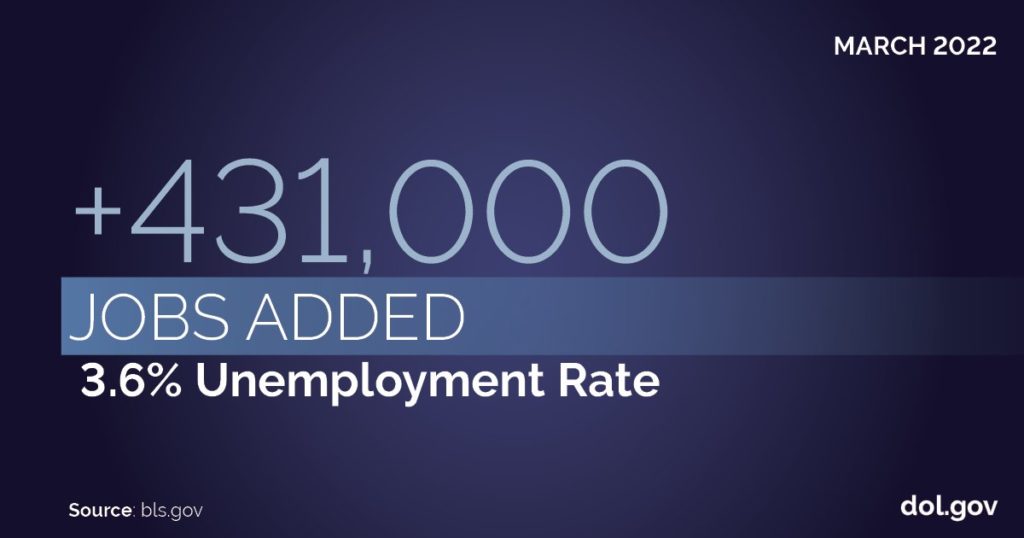
The Great Resignation Continues
The 431,000 “job gains” data are deceptive in that BLS also reported that in March the number of persons not in the labor force who currently want a job increased by 382,000 to 5.7 million. Here is what BLS reported:
- “The number of persons not in the labor force who currently want a job increased by 382,000 to 5.7 million in March * * * This measure is above its February 2020 level of 5.0 million. These individuals were not counted as unemployed because they were not actively looking for work during the 4 weeks preceding the survey or were unavailable to take a job.”
- So, the net of new jobs being worked in the U.S. was only, in fact, +49,000 (431,000 minus 382,000). In other words, as employers hired 431,000 new employees at the front door, employers lost another 382,000 out the back door…making March, in fact, a VERY small and anemic “job gains” month.
- Note: BLS does not count these 5.7 million workers in the “unemployment rate,” which is not a report of all unemployed people in America. The “unemployment rate” (the 3.6% percentage reported above) in the U.S. is only a report of “short term” unemployment: i.e., only those who remain unemployed for their first 26 weeks (during which the unemployed are eligible for unemployment insurance payments, are thus known to state workforce agencies and may be precisely counted). The short-term unemployed number 6 million, as of this March BLS Employment Report. If one added the 7 million long-term unemployed to the shoes in the short-term unemployment bucket, you would find we have almost 12 million people out of work who claim they want to work.
- It is also important to know that the “participation rate” (the rate of Americans working as a function of those who could work) also DROPPED in March over a full percentage point (from 46.8% in February to only 45.6% in March 2022.) We have a lot of workers sitting on the sidelines. The question is how can employers entice them back into the workplace as hundreds of thousands of jobs continue to go unfilled.
In March, employment continued to trend up in leisure and hospitality (+112,000) and professional and business services (+102,000). Other increases include retail trade (+49,000), manufacturing (+38,000), health care (+64,000), and construction (+19,000 – returning to its February 2020 level).
Employment showed little or no change in mining, wholesale trade, information, and government.
|
The Employment Situation – March 2022 |
||||
| Unemployment Rate | March 2022 | Feb 2022 | March 2021 | Feb 2020 Pre-Pandemic |
| National (Seasonally adjusted) |
3.6% | 3.8% | 6.0% | 3.5% |
|
Women (20+) |
3.2% 6.2% 2.8% 4.2% 3.4% 3.3% |
3.3% 6.6% 3.1% 4.4% 3.5% 3.6% |
5.3% 9.5% 5.9% 7.7% 5.8% 5.7% |
3.0% 6.0% 2.5% 4.4% 3.2% 3.1% |
| Veteran (Not seasonally adjusted) |
2.4% | 3.2% | 5.0% | 3.7% |
| Individuals with Disabilities (Not seasonally adjusted) |
8.8% | 8.8% | 10.2% | 7.8% |
See Also
Friday, April 1, 2022: Only 10% Of Those Working In U.S. Teleworked In March Because Of The COVID-19 Pandemic
The Two-Year Sabbatical Is Winding Down To A Close As Infection Rates Drop: Olly, Olly Oxen Free!

Here is how the Bureau of Labor Statistics reported the data in its monthly “Employment Situation Summary” for March 2022 published April 1, 2022:
“In March, 10.0 percent of employed persons teleworked because of the coronavirus pandemic, down from 13.0 percent in the prior month. These data refer to employed persons who teleworked or worked at home for pay at some point in the 4 weeks preceding the survey specifically because of the pandemic.” See the Household Survey Supplemental Data section, para 1.
And they are the lucky workers since an additional 2.5 million workers in the U.S. reported in March 2022 that they could not work at all or their employer required them to work fewer hours because they were working in jobs still adversely impacted by the COVId-19 pandemic:
“In March, 2.5 million persons reported that they had been unable to work because their employer closed or lost business due to the pandemic–that is, they did not work at all or worked fewer hours at some point in the 4 weeks preceding the survey due to the pandemic. This measure is down from 4.2 million in the previous month. Among those who reported in March that they were unable to work because of pandemic-related closures or lost business, 15.4 percent received at least some pay from their employer for the hours not worked, down from 20.3 percent in February.”
Friday, April 1, 2022: BLS Reports Show Educational Attainment Level Correlated to Higher Unemployment
If You Want to Do Something Positive for DE&I, Get Minorities and Women in School

Educational Attainment Level Unemployment Rate (seasonally adjusted)
- Bachelor’s Degree and Higher……….…………….…2.0%
- Some College or Associate Degree…………………3.0%
- High School graduates, no college…………….……4.0%
- Less than a high school diploma……………….……5.2%
Source: Table A-4. Employment status of the civilian population 25 years and over by educational attainment of the USDOL Bureau of Labor Statistics monthly Employment Situation Report Summary for April 1, 2022
Quick Diversity Reference Benchmarks taken from Educational Attainment in the United States: 2015 (vt.edu)
White Educational Attainments:
- Bachelor’s Degree and Higher………………….…….49.5%
- Some College or Associate Degree……………..….59.2%
- High School graduates, no college…………….……93.3%
- Less than a high school diploma……………………….6.7%
Black Education Attainments:
- Bachelor’s Degree and Higher………………………..30.7%
- Some College or Associate Degree……………..….52.9%
- High School graduates, no college………………….87.0%
- Less than a high school diploma…………………….13.0%
Hispanic Educational Attainments:
- Bachelor’s Degree and Higher……………….……….20.2%
- Some College or Associate Degree……………..….36.8%
- High School graduates, no college…………….……66.7%
- Less than a high school diploma…………………….33.3%
THIS COLUMN IS MEANT TO ASSIST IN A GENERAL UNDERSTANDING OF THE CURRENT LAW AND PRACTICE RELATING TO OFCCP. IT IS NOT TO BE REGARDED AS LEGAL ADVICE. COMPANIES OR INDIVIDUALS WITH PARTICULAR QUESTIONS SHOULD SEEK ADVICE OF COUNSEL.
SUBSCRIBE.
Compliance Alerts
Compliance Tips
Week In Review (WIR)
Subscribe to receive alerts, news and updates on all things related to OFCCP compliance as it applies to federal contractors.
OFCCP Compliance Text Alerts
Get OFCCP compliance alerts on your cell phone. Text the word compliance to 55678 and confirm your subscription. Provider message and data rates may apply.

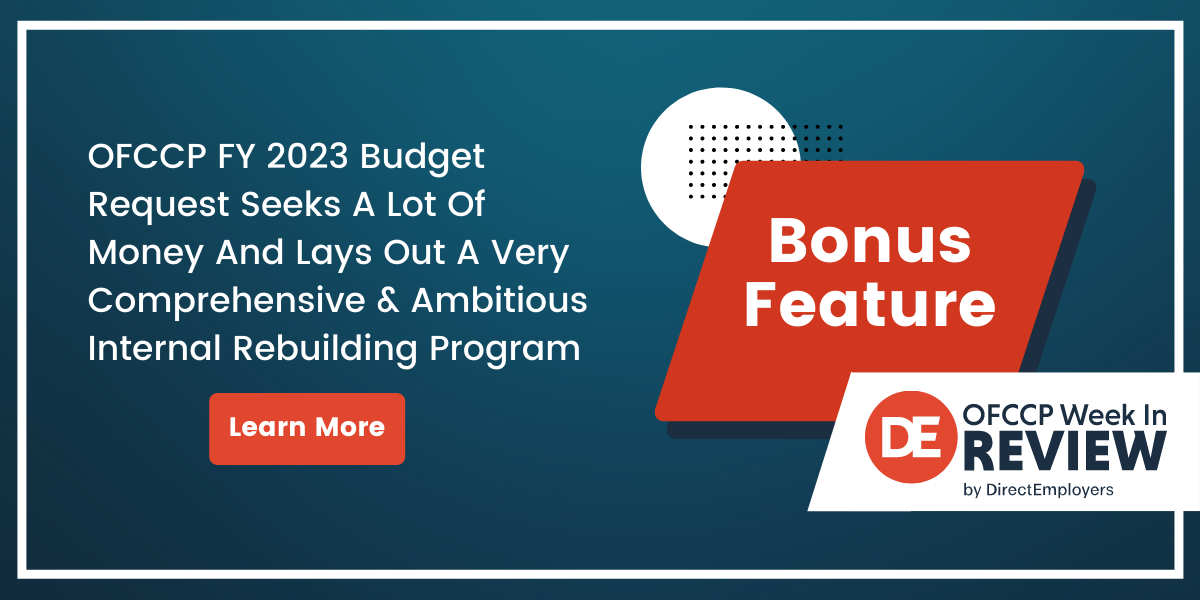

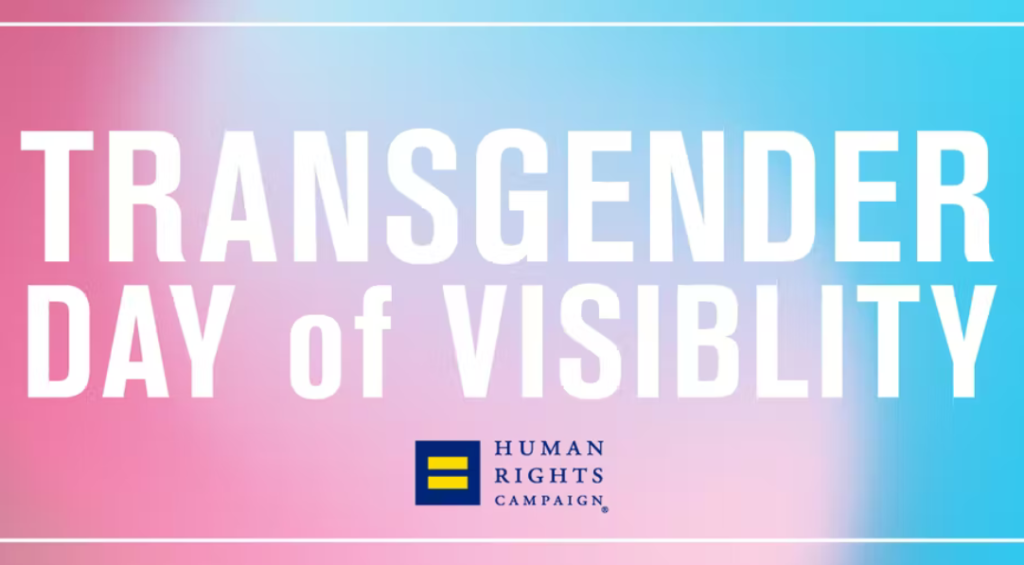

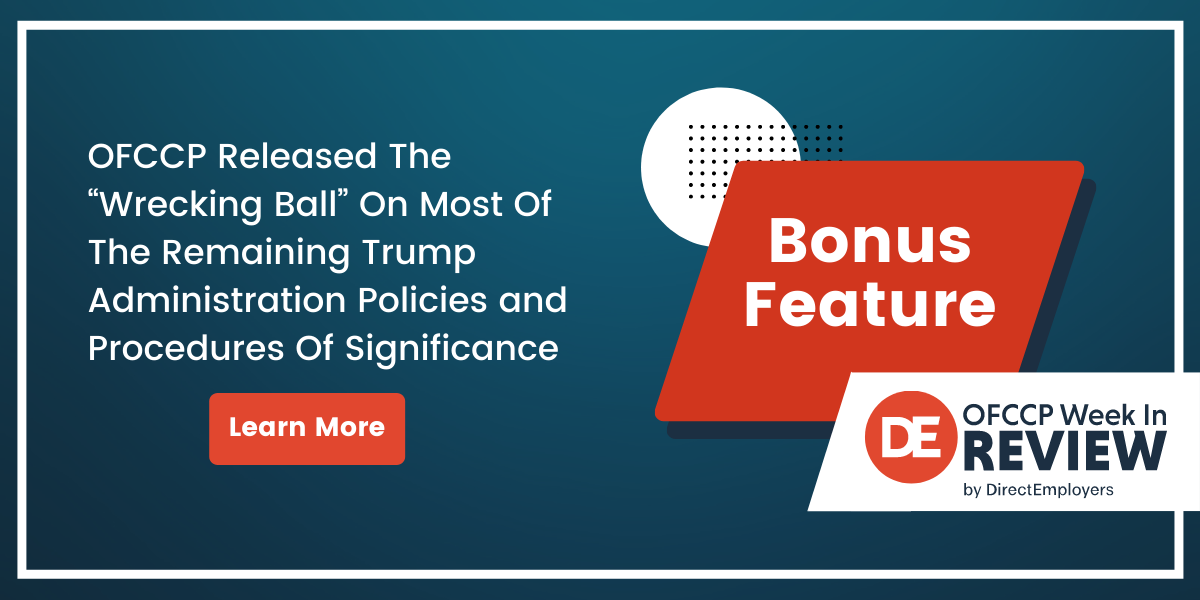
Wednesday, March 30, 2022: Comment Now on Revisions to the I-9 Form
The current version of the I-9 Form expires on October 31, 2022.
Proposed Changes
DHS is proposing the following revisions to the I-9 Form:
Comment on or before May 31, 2022.